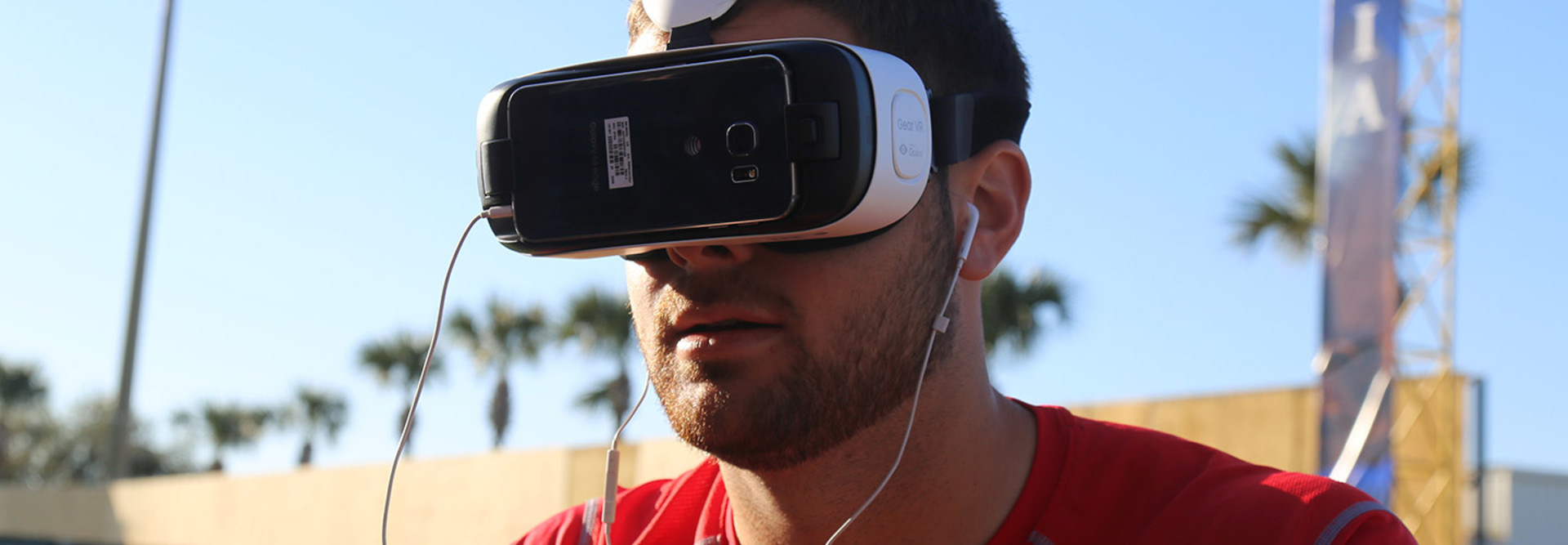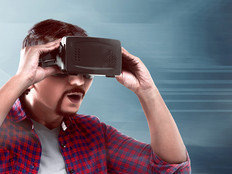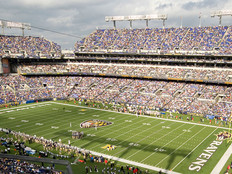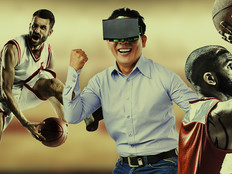Sloan 2017: Virtual Reality in Sports Still Has a 'Long Way to Go,' Panel Says
The first reaction most fans have when they put on a virtual reality headset is “Oh,” generally followed by an expletive, said David Cramer, chief operating officer of NextVR.
“It’s the hardest thing to describe and the easiest thing to show them when you strap the display on their face,” added Cramer, a panelist at a forum on VR and augmented reality at the MIT Sloan Sports Analytics Conference in Boston.
But VR faces some challenges as it seeks to gain a foothold in the sports and entertainment industry. Panelists described the evolutionary path of VR as being in “the first inning.” And companies developing the technology have a long way to go before they achieve its potential.
To this point, the sports and entertainment industry has used VR for two distinct purposes: training simulations and enhanced fan experiences.
MORE FROM BIZTECH: Check out how IT can help boost athlete performance on the field!
Practice Makes Perfect, Even in VR
The VR firm STRIVR Labs, based in Stanford, Calif., has focused on using the technology to help improve athletes’ performance. The company started working with several NCAA football teams and one NFL team (the Dallas Cowboys) in 2015. The technology uses 360-degree cameras to give athletes a first-person vantage point of the experience on the field.
Derek Belch, founder and CEO of STRIVR Labs, says VR is most often used for training by football teams. The fluidity of other sports such as soccer and basketball makes it a challenge for VR to provide a useful experience for training at this point.
STRIVR is working with two Major League Baseball teams, three NBA teams and some MLS teams — but the technology just isn’t ready yet. “Right now, American football really is the best use case.”
The technology is beneficial for players to use as a last-minute visualization tool as they prepare for a game. It is also useful for backup players to get practice repetitions in VR that they may not get in a live practice, where starters get the vast majority of the reps.
The training use case for VR has experienced some success. Belch said athletes conducted more than 100,000 play views on the STRIVR platform over the last two years, and the company has posted a profit. “We’re making money,” Belch said.
Enhancing the Fan Experience
Delivering content to fans via VR has much greater market potential, but adoption of the technology is slow. The steps that have been taken offer a look at some of VR’s potential.
San Francisco-based VR firm LiveLike has created virtual reality experiences for NCAA football games, including the Big 10 championship game, said Miheer Walavalkar, co-founder and chief business officer of LiveLike. The VR gives users the opportunity to interact with the environment and create their own experience.
After New England Patriots quarterback Tom Brady threw an interception that was returned for a touchdown in Super Bowl 51, Intel was able to give fans a VR view of the play from Brady’s perspective, said James Carwana, general manager of Intel Sports Group.
“Our goal is to give the fan the experience of sitting in the best seat in the house,” said Cramer of NextVR, “In some cases, it’s better.”
For basketball games, the company sets up cameras at numerous spots around the arena, including courtside, at center court and on the basket stanchion. This provides views of the action that are unavailable from anywhere else.
Cramer added that NextVR is also working on VR experiences for music concerts.
Obstacles Remain to Widespread VR Adoption
The technology, however, still has some issues that are hampering adoption. Users demand more content, and in some ways the technology is stuck in a difficult loop: Fans are generally unwilling to invest in VR hardware unless they have a lot of content to experience, Walavalkar said, but content producers have been waiting for a stable market for their product to emerge.
Further, many VR devices are clunky and uncomfortable, and the resolution isn’t up to some fans’ expectations, Cramer said. Headsets are likely to remain the primary VR hardware, but the devices will become more comfortable and powerful as the technology continues to evolve. He predicted that prices will fall and new features will be added to boost interest in VR.
Ultimately, the technology remains in its earliest stages, and it has significant progress to make before the industry achieves widespread adoption.
“It’s still a long way to go,” Carwana said.









